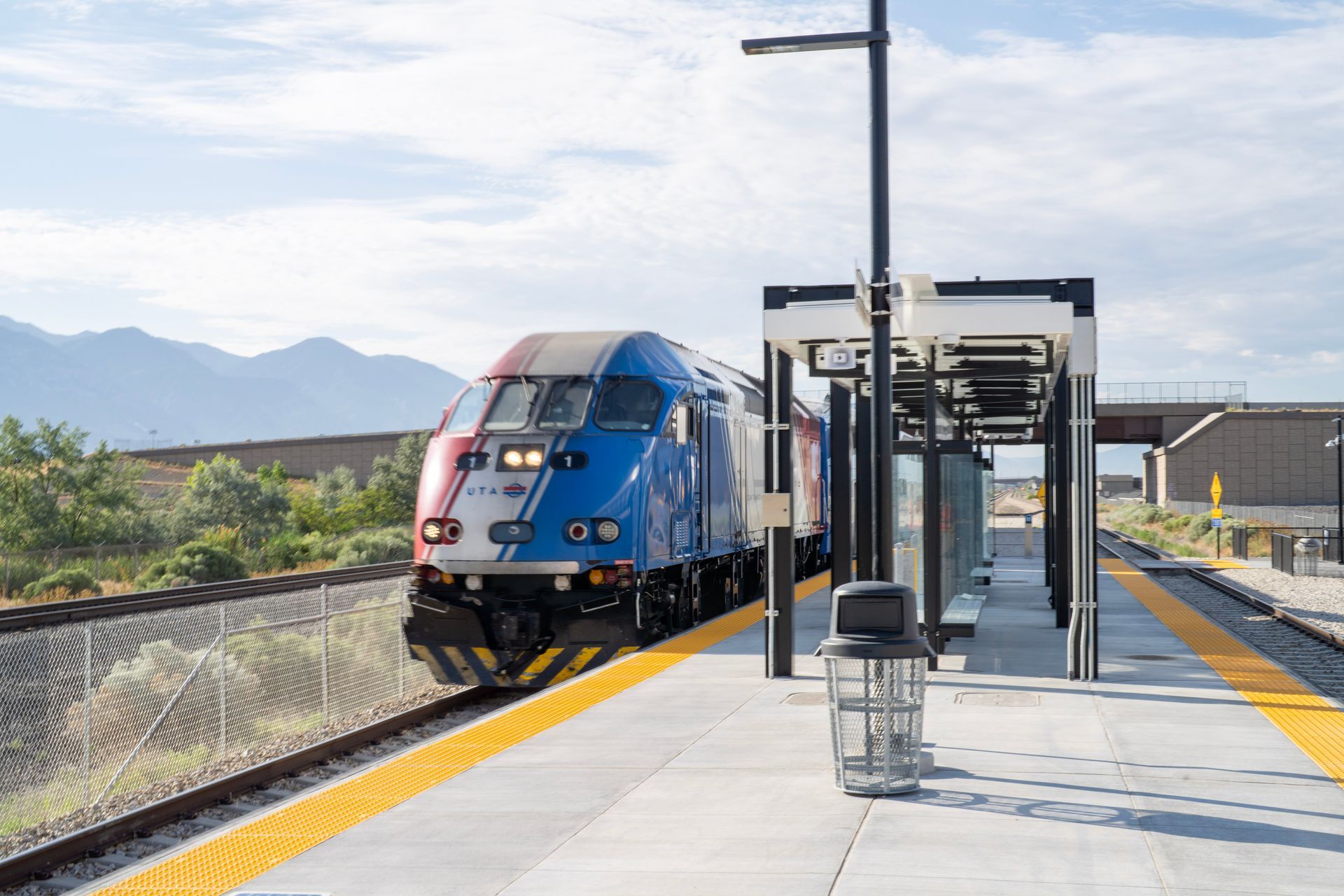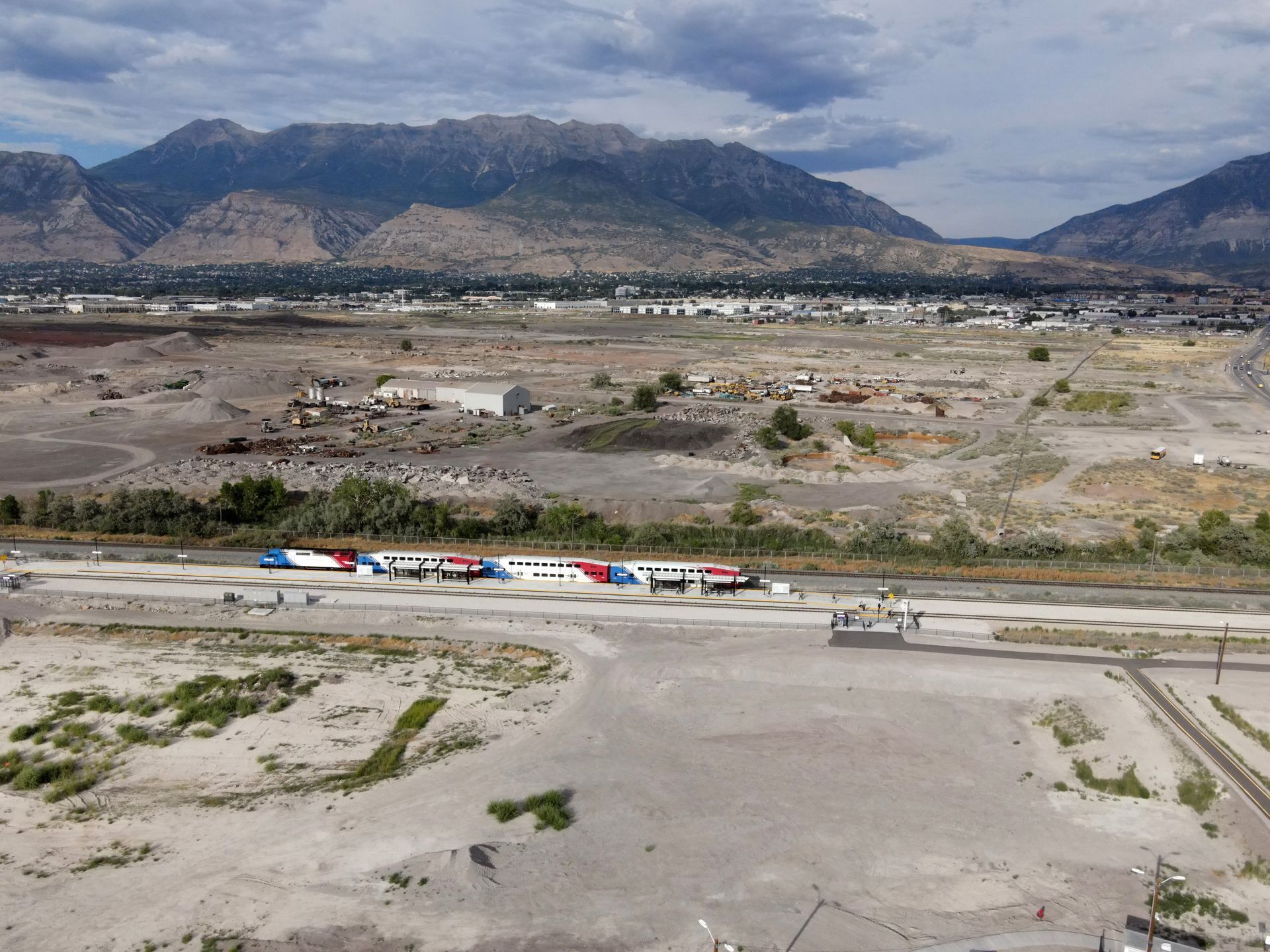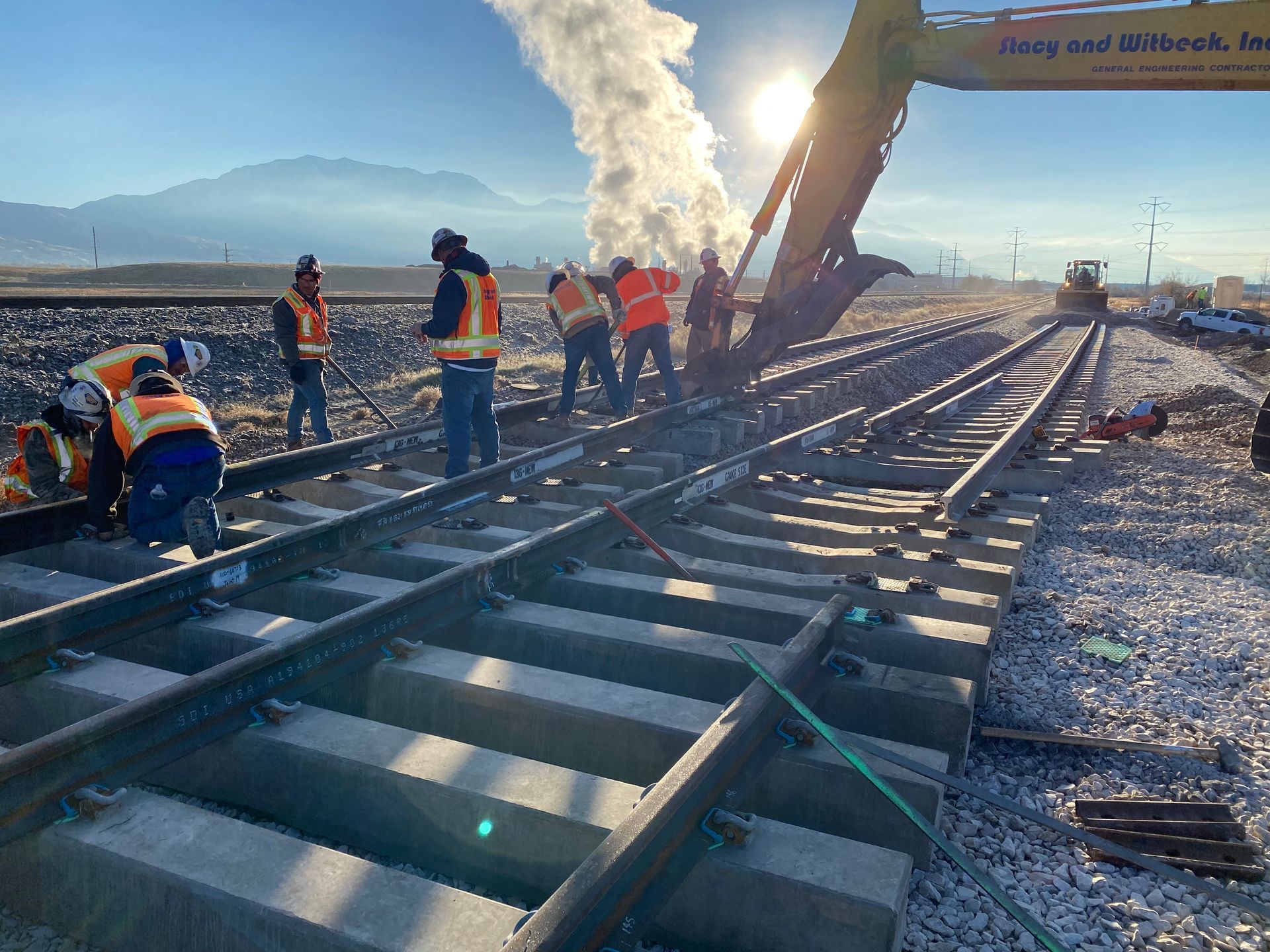The August groundbreaking for the latest FrontRunner commuter rail station had an excitement that was downright palpable. For Vineyard City’s Mayor Julie Fullmer, the buzz is a testament to forward thinking from her and her team to bring in transportation infrastructure to usher in the city’s awesome growth.
The up-and-coming city in Utah County has gone through quite a transformation over the last decade. An influx of residents are calling the city home since the Beehive State’s decade-long housing boom. It’s growing like a weed, with the 2020 Census revealing Vineyard as Utah's fastest growing city—139 in the 2010 Census to a 2020 population of 12,543. Current population estimates exceed 15,000.
The mayor even said that Vineyard’s growth was akin to a car going 0-60 miles per hour in a few seconds. “But this is 0-60 in two or three years,” she said. Getting that transportation infrastructure up to full speed required special attention from the project team to bring a new station.
Even though work on the infrastructure began in summer 2021, “a station was always planned for Vineyard,” said Marcus Olmstead, Project Manager with transportation contractors Stacy and Witbeck. “Footings were installed by UTA during the initial Frontrunner south project. We were able to dig down to the existing footings and start the station from there.”
But getting to the proverbial end of the line would be complicated. Olmstead said that run time modeling kept running into complications where trains would have to wait five minutes in Vineyard. Instead of delays, UDOT and UTA contracted Stacy and Witbeck to extend an existing siding track by 1.6 miles to keep trains chugging along as architects and planners at CRSA looked to design a rail station befitting the emerging city.
Those involved in the project stated that work with the stakeholders—a significant and varied group—was delightful. UDOT, UTA, Vineyard City and their public works team, and the Anderson-Geneva development nearby all worked together for a safe and hugely beneficial project.
Some of that teamwork, said Laura Smith, Project Architect with CRSA, was a result of the project team fully understanding the scope. After safety and connectivity came another important design driver—celebrating Vineyard's past, present, and future.
She stated that the choice to use a monochromatic black and white pallet was intentional to highlight the snow peaks from the Wasatch Range and remember the legacy of Geneva Steel and its impact on the city. Said Smith, “It is an elegant backdrop that creates a utilitarian space for arrival and departure while also celebrating the significance of Vineyard.”
Custom-designed art glass provided another collaborative element on the station with the panels highlighting Vineyard’s history. The images in the art glass were procured in collaboration with BYU’s Harold B. Lee Special Collections, with images that hearken to the history of Vineyard. Images included of steel ingot smelting from Geneva Steel, train milk carts that once delivered to residents, the Geneva Bathing Resort frequented by Utah Lake’s many visitors, and fishing in nearby Utah Lake.
“This site has been important to so many communities before and we wanted to celebrate that so that people living there now and coming to Vineyard feel the sense of place that makes it so unique,” said Smith.
As design turned to construction, the construction team brought in 60,000 tons of aggregates including steel slag from the old Geneva Steel plant to be used underneath the new train line, the adjacent service road, and the station parking lot.. While UTA had never used steel slag aggregate before, Olmstead mentioned that UDOT had done previous materials testing to solidify the material use to build up this infrastructure.
Getting all the material and supplies to the site, according to Olmstead, “It was like a one lane tunnel project. We narrowed our footprint to the bare minimum and worked with the sewer plant north of the station to take the trucks out of there.”
Since double belly trucks would need a larger staging area to turn around, Olmstead and the project team prioritized the wetlands, minimizing the project footprint as much as possible to cause a minimal amount of disturbance to the nearby flora.
The collaboration to make a type of supply loop that utilized the Geneva-Anderson development as the entrance and the sewer plant as the exit. The sewer plant’s concern was that dump trucks were too heavy, but empty trucks were light enough as to not damage or disturb any of the pipes or systems that keep the sewer system running at full capacity.
The collaboration with the natural environment, keeping it in its pristine condition, was a major win for Olmstead. “we restored that wetland and it is back to where it was is a big deal,” he said. “I’m proud of that.”
After laying subgrade, filter fabric, stabilization rock, and then fill, ballast rock came in to support the rail. The rock under the ties may seem unsteady, but Olmstead explained how the chunky, angular rocks lock together as trains pass over to provide stability and aid in drainage to avoid any standing water.
Pre-staged ties then went on top to move the project forward. Olmstead was humble in the complexity of such a job, describing it “like a LEGO set. You just gotta follow directions.”
Then it was time for the railway track. 80-foot, iron “sticks” were welded together into 800-foot “strings.” Olmstead explained, "The rails are stung onto the pre-staged ties and fastened to the ties. We then flooded the area with ballast and began to raise the track to design elevation while compacting the ballast rock below the ties using a machine called a tamper.”
The team connected electrical, communications, fiber for UTA, to allow train communication with the Positive Train Control that UTA uses for FrontRunner track to keep it safely traveling at the right speed. The construction team also constructed several culverts that feed into Utah Lake,, and extended the sewer pipe casing at the 1600 North grade crossing.
The construction team also removed an existing railroad turnout and installed a longer turn out capable of higher train speeds—necessitating an interruption to UTA service.
“In collaboration with UTA/UDOT, we scheduled this work for the week of Thanksgiving to take the track out of service,” said Olmstead. “We started Saturday before Thanksgiving and ran through the Sunday after Thanksgiving.” Workers labored around the clock, even deep frying a turkey on the job site to bring the holiday to work.
Other than the Thanksgiving interruption, Olmstead said that trains continued at full operating speed throughout the length of the project. A UTA railway worker in charge—a spotter that looked for incoming trains—was assigned at all times workers were on site and would pause the work whenever a train was coming. With these spotters and a safety-first culture, there were zero recordable incidents and zero lost time from the general contractor as they logged 29,000 man hours on the project.
And now, the 16th UTA FrontRunner train station is up and running in Vineyard. Smith explained how it all came together. “It is about creating an entire experience for Vineyard’s new city center—the experience of arriving by Front Runner to the station, stepping out to a view of the lake,” she said.
With the city achieving a type of renaissance, this “place celebrating” is monumental in creating a context for both residents and visitors. Said Smith, “When people arrive at Vineyard we want them to feel excited to be there.”
The benefits of this structure and the new rail bring enormous benefits to Vineyard. Transporting people in and out of the city to meet their daily needs is a critical accessibility component that fully links the city with the rest of the Wasatch Front.
That connectivity, independent of cars, earned praise from Jeff Speck, renowned master planner and consultant for Vineyard City. During the August ribbon cutting. As he decried the shortsightedness of car-dependency across the country, but specifically Utah.
“Your car dependence is not serving you well,” he said. “It’s damaging your health and your wealth […] the car is a prosthetic device—it’s not freedom.”
But investing the millions required to create the railway and new station was a step in the right direction. The momentum of such an investment would need to continue to bring better health, safety, and accessibility outcomes.
As a first step, it is a promising start for a city destined to continue its explosive growth. “We still build in Utah,” Mayor Fulmer said. “This is an example of us building now for the future.”
Smith spoke to how this building sets Vineyard up for an inclusive, accessible community with this train station. “This puts Vineyard on the map,” she said. “Transportation has often been a divider, but this station will be the connector.”

































